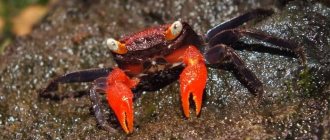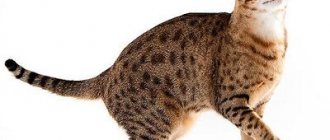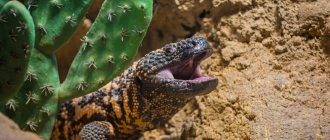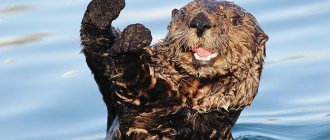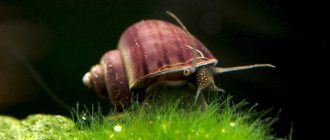Range and habitat
The habitat of the Kamchatka crab is large. It is found in the Sea of Japan, Okhotsk and Bering Seas. However, the largest concentrations of Kamchatka crab form on the western coast of Kamchatka, where the main crab fishery is concentrated.
The Kamchatka crab overwinters at depths of 200–270 m. In the spring, at the beginning of April, the migration of the crab to shallow water begins. The temperature regime of bottom waters during the spring run is 0 + 2°C. The crab moves towards the shore in schools, with females and males staying separate. At the end of April – May, female crabs, having reached depths of 25–30 m, begin to spawn larvae; spawning occurs at a water temperature at the bottom of +2 +4°C and ends in late May – early June. Males, who previously kept separately from females, mix with them. Immediately after mating, the shell is changed, and they move away from the fishing fields to places with rocky soils, where it is easier to hide from enemies. The main working depths are isobaths of 30–85 meters.
In the second half of September - October, with the cooling of waters in shallow waters, the Kamchatka crab begins to move to greater depths to wintering grounds. The crab moves at a speed of 1.5–2 miles per day.
Fishing for Kamchatka crab is permitted in the Sea of Okhotsk; in smaller quantities it is caught off Sakhalin Island, the Southern Kuril Islands, Eastern Kamchatka and Primorye. In the coastal zone of Primorye, commercial concentrations of Kamchatka crab are observed on dumps at depths of 250–350 m. In Peter the Great Bay, fishing for Kamchatka crab is prohibited.
Where do they live?
Over the many millions of years during which this class has existed on the planet, its representatives have perfectly adapted to different living conditions. They can be found in the seas of all oceans, in different climatic zones - from the tropics to the Arctic and Antarctic, in waters of different salinity and temperature.
Most crustaceans live in the seas, but there are species that have adapted to life in fresh waters - Japanese or Chinese mitten crabs. They were accidentally brought with ballast waters to Europe and settled along the western shores. This crab is often found in the rivers of Sweden, Germany, and France.
There are even land species. This is the palm thief. Its larvae live in the sea, and adults move to land, entering the water only to reproduce. They have become so comfortable on the shore that they deftly climb palm tree trunks in search of food.
Description
Kamchatka crab is one of the largest species of crustaceans. It looks like a crab, which is why it got its name, but in reality it is closer to hermit crabs. The body consists of a cephalothorax, which is covered with a common shell, and a belly (abdomen). The abdomen is folded under the cephalothorax, and looks like a tail, which the crab does not have. The shell protects the crab from enemies and serves as a support for the muscles. There is no internal skeleton. At the leading edge of the crab's shell is a beak that protects the crab's eyes. The nervous system (chain) of the crab stretches along the underside of the body.
The female differs from the male in having a more strongly developed abdomen. The male's abdomen is almost triangular. The lateral edges of the shell cover the gills, which are washed by water. The crab's stomach is located in the head, and the heart is in the back of the body. Six large spines protrude above the heart on the shell, and eleven above the stomach. Eight legs are involved in locomotion, including legs with claws. The fifth pair of legs is reduced; the crab hides it under its shell and uses it from time to time to clean its gills. With its right claw, the Kamchatka crab crushes the shells of mollusks and sea urchins, and with its left claw it cuts worms and other soft animals.
- Color: the top of the shell and legs of the Kamchatka crab are dark red (red-brown), with a purple tint. Yellowish-white underneath.
- Size: large males have a cephalothorax width of up to 25 cm. Leg span is up to 150 cm.
- Weight: male – up to 7.5 kg, female – 4.3 kg.
Structure
The cardiac and gastric regions of the shell are armed with three pairs of sharp large spines, regardless of the sex and age of the animal. The rostral spine is sharp, armed on the upper side with one large spine, often forked at the apex, and a pair of smaller spines. The movable spine (scaphocerite), which is an exopodite of the second antenna, is always simple and unbranched. The body and legs of living crabs are colored red-brown above and yellowish-white below, the lateral surfaces have large purple spots.
- Maned wolf
- Nettle
- Elk
- 100 facts about bears
- Jungle animals
- Saber-toothed tiger
Biology: structure of crayfish
Let's start with the basics of classification. This animal is a representative of the phylum Arthropoda. They are characterized by the presence of a segmented body and limbs, an exoskeleton and a mixed body cavity.
The animal we are studying belongs to the class of crustaceans. Its closest “relatives” are daphnia, shieldfish, cyclops, carp eaters and crabs. The other two classes of arthropods are Arachnids and Insects.
Crayfish is a fairly ancient representative of the animal world. This species appeared already in the Jurassic period 130 million years ago. Its fossil forms indicate minor evolutionary changes.
Lifestyle of the Kamchatka crab
The Kamchatka crab leads a fairly active lifestyle; it constantly migrates. But his path is always built along the same route. Travel speed is up to 1.8 km/h. Crabs walk forward or sideways. They do not know how to burrow into the ground.
Once a year, an adult Kamchatka crab molts, shedding its old shell. By the time the old cover disappears, a new, still soft, shell is already growing under it. The molting process takes about three days, during which the crab does not like to be seen and hides in holes and rock crevices. “Naked” females are guarded by males.
Molting for the “stronger sex” takes place later, around May, when the water temperature reaches 2-7 C⁰. In addition to the chitinous cover of the animal, the outer membranes of the heart, stomach, esophagus and tendons also change. Thus, the animal is almost completely renewed every year and gains new mass.
Young animals molt frequently - up to 12 times in the first year of life, 6-7 times in the second year and then only twice. After reaching the age of nine years, crabs become adults and molt only once a year, and old 13-year-old individuals only molt once every two years.
Where do Kamchatka crabs winter?
The wintering grounds of crabs are located quite far from the coast at depths of 110 to 200 meters. In fact, the crab does not hibernate, but continues to lead the same active lifestyle in winter as in summer. The move to depth is explained by lower water temperatures in shallow waters and the formation of ice. In the spring, when the bays of the sea are cleared of ice, the crabs move to shallower areas.
During this period, males and females of the king crab stay in separate herds and move to the shore in parallel paths. Female crabs carry eggs on their abdominal legs, which have been developing since last year, and halfway through the adult crabs' journey to the shore, a mass hatching of larvae occurs. The fully developed crab embryos in the eggs, whose translucent eyes gave them the name “caviar with eyes,” tear the shells of the eggs into two halves and float up into the water column.
Veils
The structure of the crayfish is also determined by its cover. It is represented by chitin. In terms of its chemical composition, this substance is a nitrogen-containing polysaccharide. It is very hard and tough and does not dissolve in water.
Chitin forms the exoskeleton of crustaceans. Since it is not capable of stretching, the growth of crayfish is invariably accompanied by the process of molting. The old hard chitinous cover bursts, and the new one has completely different physical properties. It is soft and colorless. As chitin grows, it begins to become saturated with lime and also becomes hard. This can happen up to eight times during the first year of life. The cancer does not grow until the next molt.
This cover forms the outer or exoskeleton. It reliably protects internal organs from mechanical damage, and the animal itself from enemies. Especially hard chitin on the claws. With the help of these limbs, cancer can even cut the shell of bivalve mollusks.
What do Kamchatka crabs eat?
Kamchatka crabs are predators. They eat marine bottom polychaetes, mollusks, amphipods, echinoderms, small sea acorns and other bottom animals. The crabs tear their prey with their claws and, using their legs and jaws, crush, grind and send it into their mouths. The right - large - claw is used to crush shells of mollusks and skeletons of sea urchins. With its left claw, the crab can tear only soft prey. Very interesting experiments were carried out to find out what sense crabs are guided by in their search for prey. Food was lowered into a large aquarium where Kamchatka crabs were kept. The animal immediately reacted to the smell with characteristic movements of the antennae and began searching for prey. The crab cannot determine the direction to the prey by smell, so it begins to move slowly, feeling the bottom with the ends of its claws. The crab lowers its claws vertically downwards and, touching the ground with the ends of the claws, quickly opens and closes them, as if snapping scissors, to see if anything gets caught. These probing movements are very energetic and "nervous".
The crab searches blindly, describing the most incredible loops along the bottom of the pool. As it approaches the feeder, when the smell of food intensifies, the crab becomes very excited and probes the bottom with its claws even more often. However, even in close proximity to the food (for example, at a distance of 1 centimeter from the end of the claws to the food), the crab repeatedly misses and moves away from it again. This suggests that the crab’s sense of smell and vision are poor helpers, and it finds its prey only through touch.
Finally, the crab probes for food with the tip of its claw and quickly grabs it with one claw or both at once. In search of prey, the animals lost an unusually large amount of time, traveling an unnecessary long distance.
Kamchatka crabs spend their entire long lives wandering, repeating the same route every year. The Kamchatka crab is an exclusively running animal and is absolutely not adapted to either swimming or burrowing into the ground. The crab cannot burrow, because then its open gills can become clogged with silt. Powerfully developed leg muscles allow you to cover long distances. The crab runs both forward and sideways, alternately throwing out and bending its walking legs. The claws of the feet act like pegs stuck into the ground. The body is supported by weight when walking. The speed of movement of Kamchatka crabs in a straight line reaches 2 kilometers per hour. However, the crab usually moves in zigzags, and the distance it travels per day does not exceed 10–13 kilometers. Individual crabs wander in different directions, and the speed of movement of the entire school is only 2–4 kilometers per day.
Crab shoals move throughout the year within their migratory area. The size of such areas for one school is almost 200 kilometers. Some crabs stray from their schools and move into schools in neighboring areas. The reason for such transitions is strong competition for food. Animals often move to areas where fishing is more active. There, the number of crabs drops significantly due to fishing, and competition for food decreases.
External structure of crayfish
The body of crayfish consists of two parts. These are the cephalothorax and abdomen. The front part is covered with the so-called shell. The abdomen consists of separate segments, on top of which are small scutes. The cephalothorax also contains two pairs of antennae, mouthparts, and five pairs of walking legs. Each of them performs specific functions. For example, the first pair ends with powerful claws, used to grab food, tear it into pieces and protect it from enemies.
Six pairs of limbs are attached to the abdomen. The last pair of legs is expanded and, together with the anal plate, forms the caudal fin. In appearance it resembles a fan. With the help of the anal fin, crayfish swim quite quickly with their back end first. Collectively they have 19 limbs.
Reproduction of Kamchatka crab
The female king crab completes one breeding cycle per year. Mating occurs in April-May after migration to shallow areas of the shelf. Before mating, the male holds the female by the claws for 3-7 days, until the female moults.
After the female molts, the male entangles the pleopods and coxopodites of her walking legs with a spermatophore thread. After a few hours, the female releases eggs and an enzyme from the genital openings, upon contact with which the spermatophores disintegrate, releasing spermatozoa.
The fertilized eggs are attached to the hairs of the female's pleopods by a shell that stretches out to form intertwined hollow stalks. At the same time, the eggs do not have a physiological connection with the female’s body - the embryos feed exclusively on the nutritional substance of the eggs, called, just like in higher animals, the yolk. The eggs, attached to the pleopods, are located under the abdomen, which provides protection. The absolute individual fertility (AIF) of a large female king crab with a carapace width of more than 16 cm ranges from 200,000 to 500,000 eggs, depending on the habitat. In the Barents Sea, the AIP of females ranges from 230,000-280,000 eggs. Females carry fertilized eggs for about ten to eleven months.
4 days after fertilization, the fragmentation of the egg into blastomeres begins, after 20-25 days the gastrulation stage begins; after 35-38 days the head lobe is formed and the thoracic-abdominal rudiments are formed; after 5-52 days the primary nauplius is formed, after 100-110 days - the metanauplius; approximately 200 days after fertilization, the pigment of the embryo's eyes becomes clearly visible and the development of its internal organs ends (zoea stage).
The duration of embryonic development depends on water temperature. Thus, off the western coast of Kamchatka, the emergence of larvae into plankton occurs in late April - early June. In the southeastern part of the Bering Sea - in mid-April - late May; in the Barents Sea, mass hatching occurs in mid-March - early April.
Growing up of the Kamchatka crab
Crab larvae are completely different from adults. They have an elongated head and chest with only three spines. Long abdomen and no limbs for movement. For a couple of months, the larva has to simply swim with the flow and push off from the water with the help of permanent jaws, which simultaneously serve as legs.
During these two months, they manage to molt four times, while the current carries them many miles from the hatching site. Then the fifth molt occurs, and the larva already takes on some of the outlines of a real crab and sinks to the bottom.
Adult larvae develop a shell that is very similar to that of an adult. Four pairs of walking limbs appear, and the abdomen shortens. After spending about 20 days at the bottom, the larva molts again. This time she already acquires all the features of an adult crab.
Fry aged about 6 - 7 years can have a shell width ranging from 5 to 8 centimeters. Like adults, they migrate in large flocks, but separately from them. In the seventh year of life, females become sexually mature and begin to move away from males, at which time the process of forming adult schools begins.
Nervous system
The components of this system are the peripharyngeal ring, the abdominal chain, and the supra- and subpharyngeal nodes. Nerve fibers extend from them to organs and limbs. Cancer has sensory systems of vision, hearing, touch, smell, and balance. The eyes have a particularly complex structure. They are on special stalks. Each of them consists of numerous simple eyes, which perceive only part of the image. And all together, the correct “picture” emerges. This vision is called mosaic.
Acclimatization in the Barents Sea
The first attempts to study the issue of introducing the Kamchatka crab into the Barents Sea were made in 1932, but after analyzing the situation, the work was frozen due to the lack of a reliable method of delivering crab specimens from the Far East.
After the war, in 1951, work on the acclimatization of crab in the Barents Sea was resumed, but it was again stopped due to the impossibility of delivering live crab: the captured animals lived in transport tanks with water for no more than two days.
The first successful transportation of adult individuals occurred by plane in ordinary bags, in 1960, by the director of the Far Eastern Fleet, Yuri Grigorievich Didenko, with several of his assistants. It was he who first brought the crab to the Barents Sea. Despite the long acclimatization of several months, about 90% of the eggs carried by the females died. After this, it was decided to import only adult individuals.
The main import of crab took place in 1961–1969, and most of it was delivered by air. In 1977–1978, another 1,200 crabs were delivered by rail. This operation was not necessary, since the first Kamchatka crab was caught in 1974. In 1977, the first crabs were caught off the coast of Norway.
Currently, the crab population in the Barents Sea is growing rapidly; by 2006, its number was estimated at at least 100 million individuals. The king crab is rapidly spreading to the southwest along the coast of Norway and to the north, where it has already reached Spitsbergen. As an omnivorous predator, the king crab destroys local species of crustaceans, echinoderms (sea urchins) and mollusks, which worries environmental organizations. Commercial crab fishing was started by Norway in 2002, by Russia in 2004. Russia and Norway determine quotas for crab production independently, although they are discussed by the Russian-Norwegian Fisheries Commission. The Russian quota for 2008 was about 11.5 thousand tons.
Major organ systems
The internal structure of crayfish is represented by quite complex organ systems. Digestive - through-type, with the presence of the liver and salivary glands, which secrete enzymes that break down nutrients. The final products of metabolism are removed from the body using the excretory system, represented by the Malpighian vessels.
The respiratory organs of crayfish are determined by its aquatic habitat, these are gills. The circulatory system is closely connected with them. She is not closed. Blood vessels open into the body cavity, mix with its fluid, forming hemolymph. It transports oxygen, carbon dioxide, nutrients, and metabolic products.
The most important function of hemolymph is protective. It contains specialized cells that carry out amoeboid movements, capture pathogenic microorganisms with pseudopods and digest them. The movement of hemolymph throughout the body is ensured by a pulsating thickened vessel - the heart. Since the blood mixes with the cavity fluid and is not divided into arterial and venous, crayfish is a cold-blooded animal. This means that his body temperature decreases as the environment gets colder.
At the end of autumn, crayfish begin to reproduce. These are dioecious animals with direct development and external fertilization. The male has a testis and two vas deferens, the female has an ovary and paired oviducts. After fertilization, the eggs are located on the abdominal legs of the female. This is how she shows her maternal instinct, taking care of her future offspring. At the end of spring or early summer, young crustaceans emerge from them, which are an exact copy of the adults.
The nervous system is also quite complex. It consists of differentiated sections: anterior, middle and posterior. The first regulates the functioning of the eyes, provides complex behavioral reactions of these animals, the rest innervate the antennae. The brain is anatomically connected to the ventral nerve cord, from which individual nerve fibers extend throughout the body.
Kamchatka crab is a valuable fishery object
The natural lifespan of king crabs is 20 years, but many of them are not destined to live that long. And all because of the constant hunting for them by humans: king crab is a valuable commercial product that is in demand all over the world! When catching them, preference is given to males with a shell length of more than 13 cm. Females are usually not caught. Crab claws are a delicious delicacy.
Its right claw, which contains the most tender and nutritious meat, is especially valuable and tasty. By the way, the meat of this crab is rich in all the necessary vitamins, amino acids and minerals: zinc, protein, iodine and other substances provide invaluable benefits to our body. The shells and entrails of these creatures are processed into useful fertilizer. These amazing creatures have long established themselves as a delicious seafood product, which is the main type of crab on the domestic market. It is not for nothing that the king crab is the most famous commercial crustacean in the world.
Diet
An interesting fact is that female crayfish are much more voracious than males. This is especially evident during the mating period. What do these species even eat? They are practically omnivores. But they find food by smell, so it must always have a “flavor.” Their plant diet includes algae, foliage of coastal trees, sedge, elodea, water buckwheat, horsetails, and water lilies. In winter, dry leaves are used for food.
Animal food is also very diverse. These are insect larvae, mollusks, tadpoles and frogs, small or sick fish, young crayfish. These animals are especially partial to carrion. But it should not be completely decomposed.
Crayfish go hunting at night, and during the day they hide in shelters. They can be holes, tree roots, stones. The composition of food also depends on the stage of the life cycle of crustaceans. So, during the period of mating and molting, they need more high-calorie food of animal origin.
Beware, poachers!
The uniqueness of king crabs and the high demand for them from consumers have provoked illegal fishing of these animals. Poachers are not asleep: there are many crabs of dubious quality on the domestic market. This is poached products. Basically, “illegal” crabs come to us from the Barents Sea, and the catch of Far Eastern poachers almost never reaches the European part of our country. All this leads to the fact that crustaceans are massively exported to Japan.
Rospotrebnadzor employees do not recommend eating such products, because only God knows what quality the king crab is. The price of the meat of these animals corresponds to its quality. For example, a kilogram of a Kamchatka crab knee will cost about 1,300 rubles, and a kilogram of the second phalanx will cost about 1,700 rubles. For a whole crab, say, weighing 5 kg, you will have to pay about 10,000 rubles. This is such an expensive pleasure! And it’s no coincidence. As mentioned above, Kamchatka crab meat is an irreplaceable source of all the microelements, vitamins and, of course, minerals that our body needs. Doctors recommend eating as many dishes prepared from this animal as possible. This helps to increase visual acuity, improve the body’s condition in case of cardiovascular diseases and anemia.
Internal structure of crayfish
During embryonic development, a secondary body cavity is formed in all arthropods. But it does not persist throughout the animal’s life. In the process of individual development, this structure is destroyed, merging with the remains of the primary one and forming a mixed cavity. The spaces between the organs are filled with a fatty body in crustaceans. This is a type of loose connective tissue that performs important functions: storing nutrients, forming blood cells, protecting against mechanical damage.
Preparation
In commercial processing, the crabs are transported to the cooking areas alive. Then they are cut and cleaned. Parts of crab, boiled in boiling water, are immersed in cold salted water, after which they are frozen and sent to restaurants in various countries. Crab meat is eaten hot or cold, usually with melted butter or garlic sauce, and made into salads, sandwiches and many other delicious dishes.
